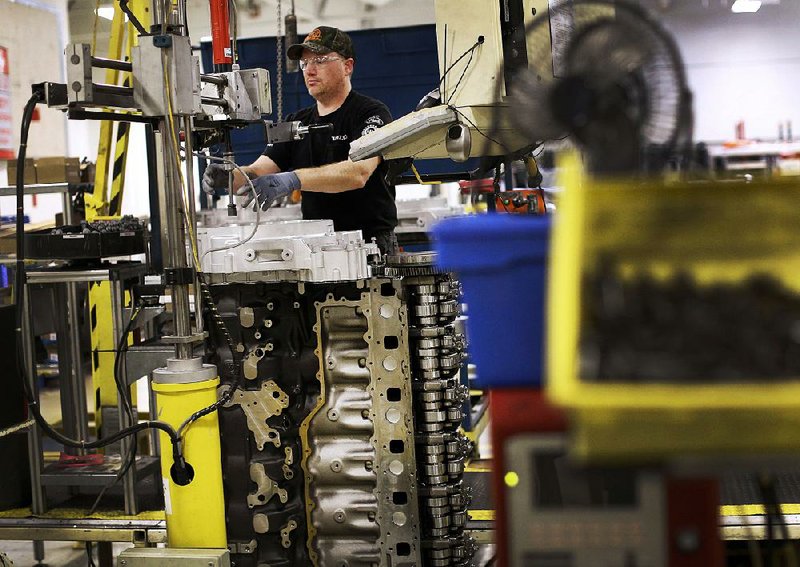WASHINGTON -- U.S. factory output rose 0.6 percent in May after dipping 0.1 percent the previous month, the Federal Reserve said Monday. April's figure was revised upward from an initial estimate of a 0.4 percent decline.
Americans, buoyed by steady job gains, are buying more cars, while businesses are ordering more machinery and other equipment. Those trends are fueling factory production and driving growth.
"Manufacturing activity is humming along at a fairly constructive pace," said Tom Porcelli, chief U.S. economist at RBC Capital Markets LLC. "That's something we expect will continue over the balance of the year."
Overall industrial production, which includes manufacturing, mining and utilities, also rose 0.6 percent in May. It had fallen 0.3 percent in April.
Mining output, which includes oil and gas production, jumped 1.3 percent, while utility output declined 0.8 percent, its fourth straight drop.
Industrial production grew 4.3 percent in the past 12 months, the fastest annual pace in nearly two years.
"With manufacturing accelerating, there is every good reason to believe that the economy is beginning to hit its stride," Joel Naroff, president of Naroff Economic Advisors, said in a note to clients.
Last month, factories produced more autos, furniture, industrial machinery, computers and appliances, a sign of healthy consumer and business demand.
The nation's factories are running at 77 percent capacity, the most in six years, though still 1.7 percentage points below the long-run average. As factories move closer to full capacity, factory owners will face pressure to invest in plants and equipment, a trend that could help the economy.
The data follows other recent reports that also point to steady increases in factory production. Auto sales reached a nine-year high in May as Americans purchased more SUVs and pickups.
A survey this month by the Institute for Supply Management, a trade group of purchasing managers, found that manufacturing expanded faster in May than in April. Growth was broad based across nearly all the 18 sectors the survey covers.
And the ISM survey's measure of orders rose, a sign that output should remain healthy in the months ahead.
Manufacturers are hiring more to keep up with demand. Factories added 10,000 positions in May, and the average workweek for manufacturing employees grew.
Greater factory output would help drive growth after the U.S. economy shrank at a 1 percent annual rate in the first quarter, though recent reports indicate that the contraction was probably larger. Many economists now think the government will say the economy shrank at a 2 percent pace when it revises its estimate next week.
Still, most analysts expect the economy to rebound and grow at a roughly 3.5 percent annual pace in the second quarter and at a 3 percent rate in the second half of the year.
The International Monetary Fund said Monday that the U.S. economy is growing a modest 2 percent this year, below its previous estimate of 2.7 percent.
That would be nearly identical to the economy's 1.9 percent growth in 2013.
A brutal winter and a slowing housing recovery caused the economy to shrink during the first three months of 2014, the IMF noted in a report released Monday.
Recent figures suggest that a "meaningful rebound" will propel growth the rest of 2014, the IMF said.
A third report released Monday said confidence among U.S. homebuilders rose in June by the most in almost a year, a sign the residential real estate market is stabilizing after reeling from severe winter weather.
The National Association of Home Builders/Wells Fargo sentiment gauge climbed to 49 this month from 45 in May, the biggest gain since July 2013, figures from the Washington-based group showed today. Readings greater than 50 mean more respondents report good market conditions.
The increase "is a welcome sign and shows some renewed confidence in the industry," NAHB Chairman Kevin Kelly, a homebuilder and developer from Wilmington, Del., said in a statement. "However, builders are facing strong headwinds, including the limited availability of labor."
Information for this article was contributed by Christopher S. Rugaber and Josh Boak of The Associated Press and Victoria Stilwell and Shobhana Chandra of Bloomberg News.
Business on 06/17/2014
